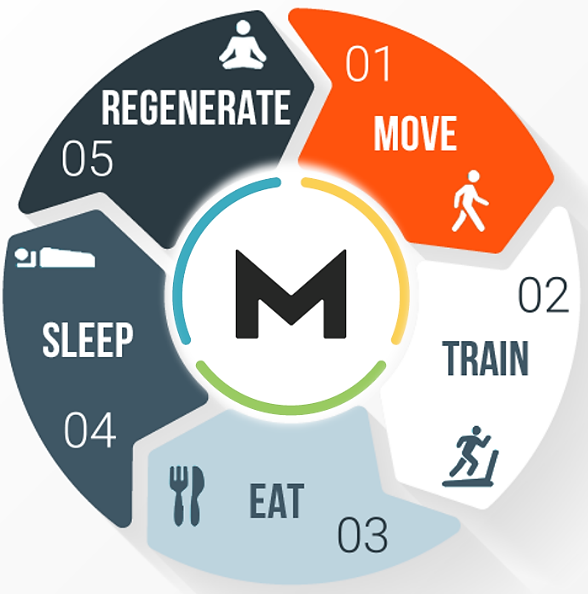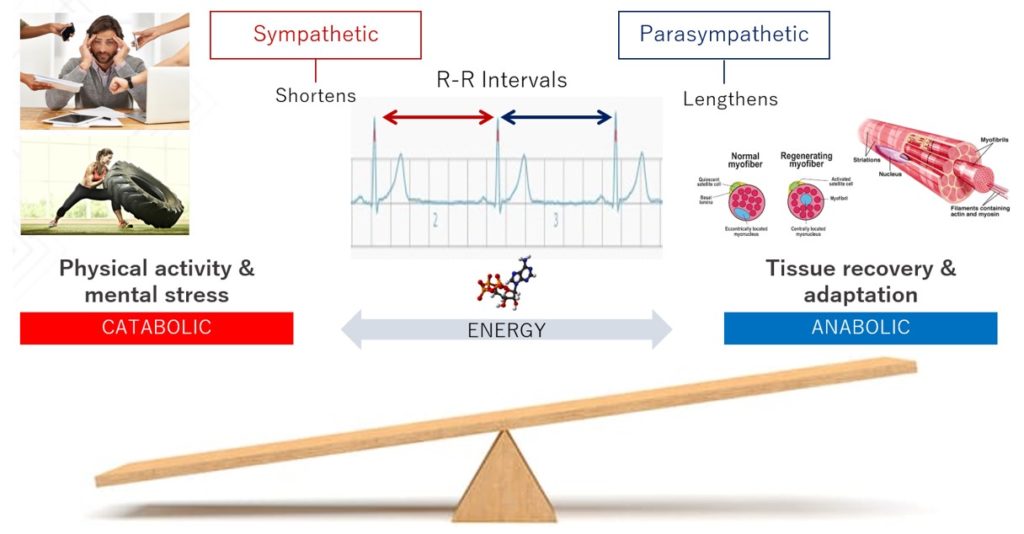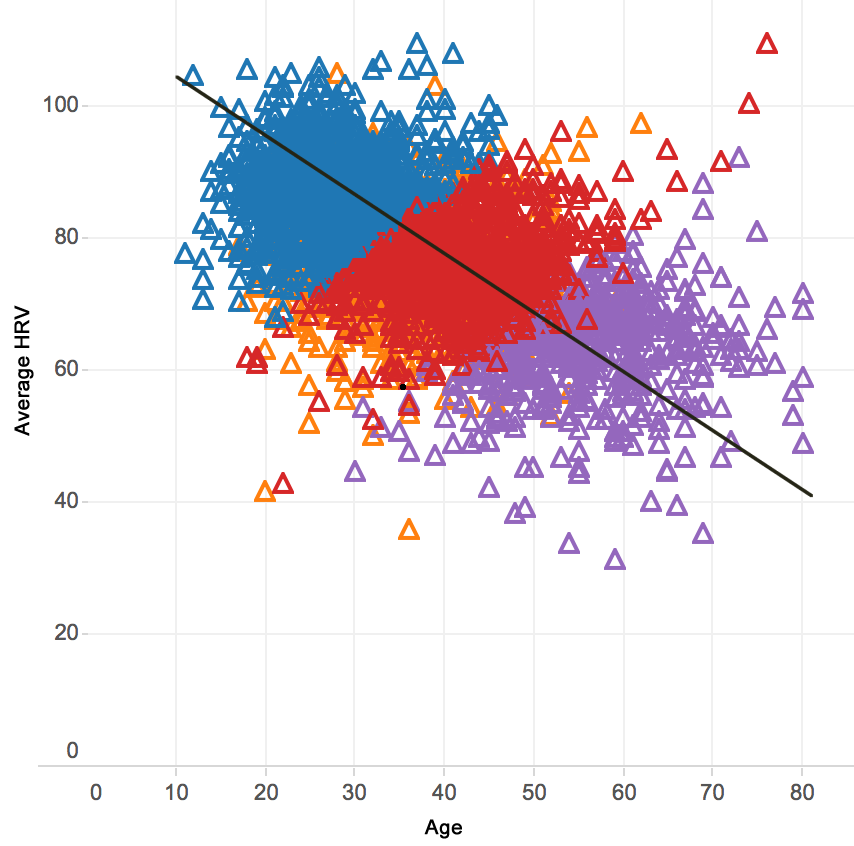
Ten years ago, when I used to give a talk to a room full of fitness people, I’d often ask how many of them were using heart rate variability (HRV). When nobody would raise their hand, I’d ask how many of them knew what HRV even was.
A couple of hands usually went up, but most of the room looked at me with blank stares.
When I ask people these same questions today, almost everybody knows what HRV is, or has at least heard of it. A lot of them have even used it, whether it was my first HRV app, BioForce HRV, my current app, Morpheus, or another one.
HRV has become a popular tool in fitness, but
Why people fall short of their fitness goals
Whenever someone talks about why they’re training or following a new diet, the discussion inevitably revolves around the goals they want to achieve. Maybe they want to drop some extra fat and look better in a bathing suit. Maybe they want to get bigger and stronger. Perhaps they’re trying to make the team, or just prolong their career and stay at the top of their game.
Regardless of what someone’s goals may be, I’ve come to see that there are only two big reasons why most people ultimately fail to reach them…
The first is that all too often, people approach both training and nutrition with the wrong mindset, the intensity-driven mindset. They think the goal to train as hard, as fast, and as long as possible, every time they train.
No pain, no gain. Right?
When it comes to their diet, it’s the same thing. They try to eat the fewest number of calories, or the fewest grams of carbs, or fat, or whatever else they think is bad for them.
The second reason people so often fail to reach their goals is because they are unable to put all the pieces of the fitness puzzle together to drive progress. They get their diet down, but then they only get 6 hours of sleep a night and they’re constantly stressed from work.
They start sleeping more, but then they push too hard in the gym and end up tweaking something. They can never quite put it all together.
This is because what’s missing is the understanding that literally everything in your daily life comes down to energy.
How much you move, how hard you train, what foods you eat (or don’t eat), how much you sleep… every aspect of our daily lives is connected to energy. The only way to truly reach your fitness goals to embrace this concept and build your daily habits, your personal routine, your training program and your nutrition around living a recovery-driven lifestyle.

Living a recovery-driven lifestyle means that each day, you connect all the dots and focus on the fitness process and being healthy. Instead of feeling like you need to sweat it out at the gym after a long, frustrating day at work, you realize that you’re better off targeting recovery instead of crushing yourself with another high-intensity workout.
After a couple nights of poor sleep, you decide to increase calories the next day rather than cutting them back even more, in order to keep burning fat. You take the elevator instead of the stairs because you’d rather spend your precious energy on your workout than aimlessly racking up steps.
What it all comes down to is ensuring that your lifestyle and daily habits are in line with how your body is designed to work. When you build each day around moving, training, eating, sleeping and regenerating, you accelerate recovery rather than just fatigue.
Recovery-driven fitness starts with the understanding that managing energy properly is the most important thing we can do. Practicing “proper” energy management will mean something different for each person, but it always starts with the idea that we want to focus on the minimum dose of training necessary and the maximum amount of recovery possible.
Recovery Debt
Dopamine and adrenaline are the body’s two most powerful chemical messengers and they can drive us to do crazy things.
While training might not kill you, it’s far too easy to let our biology trick is into doing too much. We all get addicted to the feeling of having a great workout and seeing the results of our hard work.
This is why we so often fall into the trap of thinking that if some training is good, then more training must be better. If high intensity worked, then higher intensity will work even better.
The problem with this idea?
Sooner or later, everyone realizes the body doesn’t work this way. The reason high-intensity is so powerful is that it’s tremendously stressful. This stress signals the body to become bigger, stronger, more powerful and better conditioned. In order for all these things to happen, however, your body has to be able to recover. When the amount of stress outweighs your ability to recover, you create a recovery debt.

Do this long enough and, sooner or later, your body will fight back.
The key to making continuous progress and avoiding this backlash is to know exactly when to push and when to let your body recover. One of the most important tools for this job is heart rate variability (HRV).
What is HRV?
Heart Rate Variability (HRV) is an accurate, non-invasive way to measure activity of the Autonomic Nervous System (ANS). This is the part of the nervous system that largely manages energy and it responds to literally everything you do: how you exercise, recover, eat, sleep and perceive stress.
Your ANS is separated into two branches – your Sympathetic Nervous System (SNS) and your Parasympathetic Nervous System (PSNS).
Your SNS controls your body’s “fight or flight” reactions in response to internal or external stressors. Biologically, the SNS evolved to deal with the major stressors like jumping out of the way of a moving vehicle or fighting off an attacker.
But this same response also occurs when you exercise, perform challenging mental tasks, worry how you’re going to pay the bills this month, or have an argument with your spouse or significant other.
Your Parasympathetic Nervous System (PSNS) on the other hand, controls your body’s “rest and digest” responses and it is what drives recovery and regeneration. The PSNS is meant to help build for the long term and helps you adapt to training and to get faster, stronger, more muscular, more efficient (better conditioned) and healthier.
Your SNS and PSNS control the same organs with opposing effects. Although it’s not a perfect analogy, the SNS is like your gas pedal and your PSNS is your brake. They work together to make sure you’re always going the right speed.
Both branches are always working, and both are needed to maintain homeostasis (balance or equilibrium) in your body. With every single heartbeat, your nervous system is saying “slow down” or “speed up” based on feedback from all your senses, emotions, etc.
A healthy nervous system has a balanced but strong push and pull between the sympathetic and parasympathetic branches.
As you age, your HRV naturally declines (and this isn’t a good thing). It means you’re more susceptible to a range of health problems, and your risk of dying from things like cardiovascular disease, stroke, and even cancer goes up.
You can see this clear relationship by looking at this graph I put together after analyzing more than 1.5 million HRV tests with my first app, BioForce HRV.

Notice how people with higher HRV values tend to be much younger than those with lower values. The trend line down the middle tells the same story: the older you get, the lower your HRV is likely to be.
But here’s the good news: even though your HRV will decline as you age, you have control over how slowly this happens.
Look at 40-year-olds on the graph, for example. You can see that people at that age had average HRV values as low as 60 or as high as the mid-80’s.
That’s a massive difference. It means that when you’re 40, you can have the same HRV as the average 20 year-old (if you do things right).
If you want to see my top strategies to increase your HRV, be sure to check out this article on 5 Tips to Increase your HRV.
